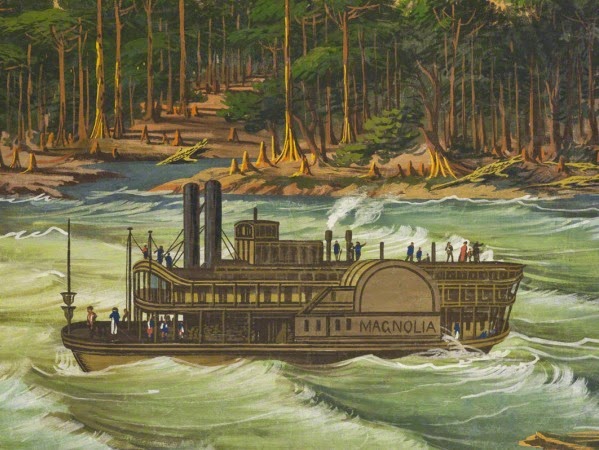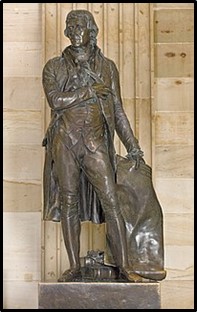Presented at the 2017 Abbeville Institute Summer School.
False River
—For Olivia Pass,
and for Patric
It’s wide, impressive, but it’s false—really an oxbow lake,
formed when the Mississippi, on its own, changed
its course, three hundred years ago or so, chopping off a loop,
leaving to the west a “Pointe Coupée”— an “island”
and a flowing C. Farther north a bit, there’s “Old River”
too, another oxbow, designed by Cap’n Shreve, a shortcut,
practical, for shipping; then, at its other end, “Three Rivers,”
a third detour and a canal linking the great Meschacébé
to the Red and Atchafalaya. A pirogue could get lost here,
drifting, ghostly, trapped by river fogs, trees, brambles,
old shacks, derelicts. In contrast, we arrive sanely by way
of St. Francisville, crossing the river on the Audubon Bridge
to New Roads, “Le Chemin Neuf.” Listed buildings draw
the eye: a former bank, restored, an old store, the courthouse
(Romanesque revival), and LeJeune Plantation. Oh,
and there’s St. Mary’s Church, a red-brick neo-Gothic beauty!
The very landscape’s old and venerable— Spanish moss,
of course, ancient azaleas, bald cypress, and sixty parish trees
on the Live Oak Registry, with monumental, sculpted trunks
and limbs that graze the ground. But we’ve no time now
for touring; I’ve got to speak to the Historical Society,
in their museum, likewise historical. There’s chattering
among the crowd, black and white, partly in the local Creole,
maintained by families named Bergeron, Dupré, LeBeau,
Provosty. I am welcomed warmly; aren’t we all the children
of the beautiful French tongue? Afterwards, Olivia, Pat,
and I go off for seafood to Morel’s, built right on the oxbow,
flanked by camps and docks. Across the water, lights
beam or wink their messages; old street lamps guide our steps
along the gallery, then, after dinner, show us to the bridge.
Why, we ask ourselves the next day over coffee, drive home
via Baton Rouge, the reasonable route? Let’s try back roads,
past cattle pastures, fallow fields, the ripening sugar cane,
and bayous edged with waxy myrtle and red oak. Lovely—
but a labyrinth. We wander. One town we hit twice.
I recognize Livonia, where once I ate at Joe’s Dreyfus Store,
but that doesn’t help. I think now of Three Rivers.
Finally, Maringouin, where, lucky as we are, we find the route
to Lafayette. We’ve left, though, some of ourselves behind,
the shriving that authenticates paid purchase of experience.
From A Memory of Manaus. © Mercer University Press, 2017. All rights reserved.
Honey
Mellifluous—it’s such a lustrous word!
—suggesting fluid flavor, liquid light,
the clear, melodic trilling of a bird,
a mellow, sweet appeal to appetite.
Within the honey’s amber heart, late rays
of sunset, captive, illustrate their glow,
with insects’ industry on summer days
preserved and concentrated in its flow.
Whatever feeds the bees’ transforming powers—
alfalfa, clover, cat-claw, mellilot,
palmetto, orange, or the rarest flowers—
is changed to pleasure in the honey pot.
Now, worker bees are withering in the hive—
while we endure, apparently preferred,
and, in our greater scope of living, thrive—
economy of nature, or absurd?
The essence of this apian husbandry,
although ephemeral, gives evidence,
at least, that meaning goes beyond the bee,
a providential legacy—art’s sense.
—From On the North Slope, © Mercer University Press, 2012. All rights reserved.







